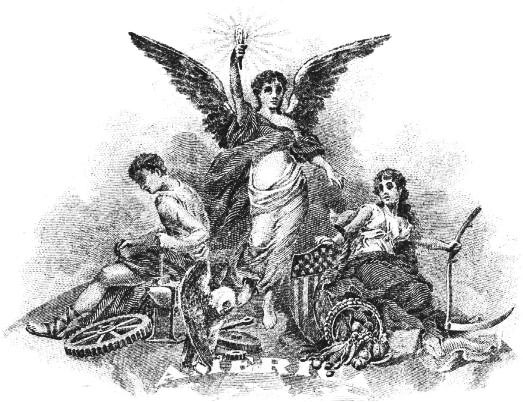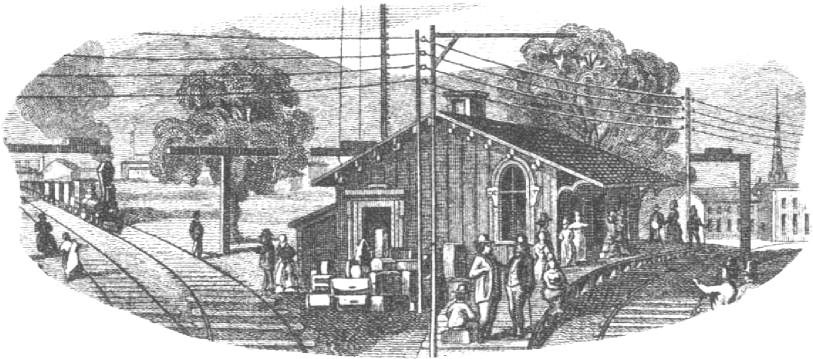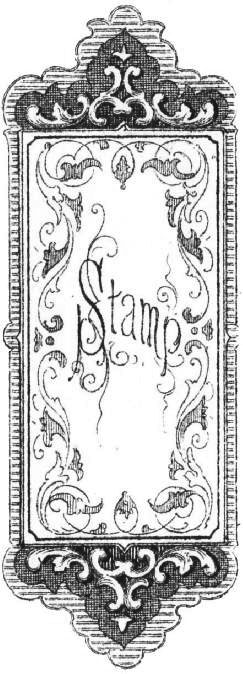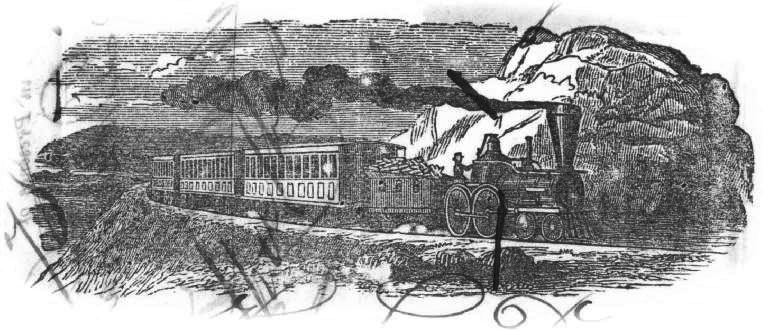
Price Disparities
By now, most of you know that I continually track sales of railroad stocks and bonds. I enter prices into the database daily and nudge prices up and down in response to trends I see.
And I see some pretty weird things.
About once a week, I see nearly identical certificates sell in very wide price ranges. It is common to see a certificate sell one day for $25 and a day or two later for $100. If that same certificate is found in a multi-item lot, it may sell for less than $10.
Huge price disparities are the rule and have existed since long before I started this project. I commented on certificate pricing oddities in the first edition of my catalog. At the time, I mistakenly thought that pricing disparities would narrow as knowledge increased.
 Rather crude lithographed image of three allegorical figures standing on a map of “America”. This vignette by The Broun-Green Co. appears on a 1902 certificate of the Automatic Railway Signal Company. This is a perfect example that many scarcer certificates are unimpressive and consequently in less demand.
Rather crude lithographed image of three allegorical figures standing on a map of “America”. This vignette by The Broun-Green Co. appears on a 1902 certificate of the Automatic Railway Signal Company. This is a perfect example that many scarcer certificates are unimpressive and consequently in less demand.
I cannot see any evidence that price disparities have narrowed at all. In fact, now that the dollar has fallen so dramatically relative to the Euro, I see larger price disparities now than I did only five years ago!
Only recently, I was entering prices from a recent German auction and saw that several items had sold for 6 to 8 times their typical U.S. prices. That kind of disparity should get the attention of anyone who collects certificates!
Large price disparities can partially be explained by the narrowness of our hobby. Simply put, there are too few buyers at any one instant in time. One day, ten people may want a certificate. The next day, only one person is willing to buy. This is a classic example of the law of supply and demand in small markets which experience wild and unpredictable price swings.
Price disparities also occur because of unequal information. Collectors often become set in their ways. Through time, they tend to buy from fewer suppliers. Tunnel vision is not a good thing when trying to build valuable collections. If collectors insist on buying from single sources, how can they possibly know when prices are fair?
I see this phenomenon all the time, mostly in conversations about eBay. People tell me they think particular certificates are rare and valuable because they seldom see them on eBay.
Many certificates seem rare on eBay, but are, in fact, not rare at all. Collectors would get vastly different views of the hobby by bidding in major auctions and buying from many different dealers. Beginners still fail to realize that thousands of scarce and rare certificates are readily available from major U.S. and European dealers every day. They don’t need to wait for eBay appearances. Appearances which probably will never come!
How can you avoid ending up on the wrong side of the price disparities so common to our hobby?
 Sensationally out-of-scale image from $105 interest bonds of the Toledo Canada Southern & Detroit Railway Company, 1873. The station and passengers seem moderately well-executed, but the train at the left is so bad that it seems like it was kludged in from some other image. Vignette by Henry Seibert & Bros. While Seibert’s images were never great, this common vignette is among the worst known on any railroad certificate and consequently seems much out of character.
Sensationally out-of-scale image from $105 interest bonds of the Toledo Canada Southern & Detroit Railway Company, 1873. The station and passengers seem moderately well-executed, but the train at the left is so bad that it seems like it was kludged in from some other image. Vignette by Henry Seibert & Bros. While Seibert’s images were never great, this common vignette is among the worst known on any railroad certificate and consequently seems much out of character.
First, know what certificates you want, why you want them, and what your absolute maximum prices will be. Then, when presented with “buy” opportunities in auctions, shows, price lists, or online stores, you will be able to recognize good deals versus bad deals.
Second, track prices of items you may ultimately want. In a hobby like ours, prices fluctuate constantly. How can you possibly recognize good prices if you have no price history?
Thirdly, track the inventory of major dealers in the specialties you collect. If you see certificates you want, but you see them month after month after month, you will know that dealers are probably willing to bargain. If you see desirable certificates disappear from stock almost immediately, you will learn what you will need to pay the next time they come up for sale.
Fourth, be patient. You don’t have to own everything today. Just because other collectors are willing to pay exorbitant prices because they are in a hurry, does not mean you need to. I can show you huge numbers of examples where today’s prices are fractions of all-time high prices. In collecting, patience can be a virtue.
Fifth, be ready to pounce when the time is right. If you have done your homework, and you are perfectly clear about why you need to own something, then you will be ready to bid or buy when target certificates come up for sale.
530 New varieties of certificates since September
|
September
letter |
This
letter |
| Number of certificates listed (counting all variants of issued, specimens, etc.) |
22,280 |
22,941 |
| Number of distinct certificates known |
16,871 |
17,401 |
| Number of certificates with celebrity autographs |
1,674 |
1,699 |
| Number of celebrity autographs known |
348 |
347 |
| Number of railroads and railroad-related companies known |
25,521 |
26,025 |
| Number of companies for which at least one certificate is known |
7,033 |
7,153 |
| Serial numbers records |
81,632 |
85,025 |
Information from eBay
I am continually honored by the numbers of people who contribute to this project.
EBay links were very popular contributions, but they got out of hand. Links to eBay sales became so burdensome that I had to stop accepting them in June, 2006. I could not really stop people from sending links, so I finally reached a point where I must automatically delete all incoming email that contains links to active eBay sales.
Time is a major reason for this policy. It takes twice as long to retrieve usable information from eBay sales links than from any other source.
The primary reason for my no-eBay-links policy, however, is the appearance of conflict of interest. I seldom bid on certificates, but when I do, I cannot afford contributors thinking I am using their information to bid against them.
Some people send pictures from eBay sales because they think I will miss them. THAT is okay! Simply right-click on images and choose “Send Image” from the drop-down menu. An email screen will open and you can type your observations in a message. Just don’t include links.
(Firefox and Internet Explorer behave differently when sending images. If presented with an option, choose “Keep Original Sizes”.)
Supply, demand and rarity
 One would think that rectangular stamp frames would have been easy to engrave. For major companies like American Bank Note Co., that was probably true. Once executed in steel, stamp frame engravings could have been transferred to any numbers of steel plates. This frame, however, shows that it was substantially more difficult to maintain quality when engraving on lithograph stones. Although more than adequate for its intended purpose, this stamp frame on an 1868 certificate for the Stony Creek Rail Road Co. shows relatively crude execution. In fact, the main vignette on this certificate appears more professional than the frame. Engraved by Steng & Paxson, Philadelphia.
One would think that rectangular stamp frames would have been easy to engrave. For major companies like American Bank Note Co., that was probably true. Once executed in steel, stamp frame engravings could have been transferred to any numbers of steel plates. This frame, however, shows that it was substantially more difficult to maintain quality when engraving on lithograph stones. Although more than adequate for its intended purpose, this stamp frame on an 1868 certificate for the Stony Creek Rail Road Co. shows relatively crude execution. In fact, the main vignette on this certificate appears more professional than the frame. Engraved by Steng & Paxson, Philadelphia.
Every day, I see sales of certificates on eBay and elsewhere where sellers try to tout the values of their items by proclaiming RARITY!!!!! It is as if they think rarity automatically bestows great value on things.
Rarity has a relationship to price, but the relationship is more remote than most people seem to think. Rarity merely presents a haphazard estimate of the number of collectibles that may remain. Rarity says nothing direct about price because it says nothing about attractiveness and desirability.
Let me illustrate that the relationship between rarity and price is tenuous and flexible.
Think back to a time when you bought or sold a scarce certificate. Maybe you negotiated with a seller. Maybe you won a bid in an auction. Maybe you sold something you owned for a long time.
Whether you were the buyer or seller, you competed with one or more people and eventually agreed upon a price. At that single instant in time, you established a price.
Moments later, I suspect your mind started playing a series of nagging questions. “Did I pay too much?” “Did I give away the farm?” “Should I have bid less?” “Did I agree too quickly?” “Should I have waited?”
Within mere moments of a purchase or sale, your impression of price started shifting.
Between those successive moments, did rarity change in the slightest?
Prices of collectibles reflects complicated interplays of desires between buyers and sellers at the time of transactions. Desire is “demand.” Yet, considered alone, even desire has an imperfect relationship with price.
Prices are established only when supply and demand interact. Prices are established only when two or more desirous parties compete for the same items. During those periods of competition, rarity can possibly inform buyers and sellers how long they may need to wait before new buying opportunities may appear. By itself, though, rarity cannot possibly say what fair transaction prices may be.
The number of certificates available to our hobby changes little. Supply is fixed. Yes, hoards occasionally appear. And yes, tornados, hurricanes, floods, earthquakes and the postal service destroy a small number of certificates every year. Still, those minimal changes cannot explain the price movements we have seen in the last decade.
During that time, rarity has stayed the same, but prices have fallen substantially. Regardless of possible explanations, the point remains that prices are down. That means demand (desire) is down. That means that when two or more people compete for collectible certificates, they are unwilling to pay as much as they used to.
So what role does rarity really play?
As best I can tell, rarity can do little but imply how long buyers may need to wait to find another example of the same certificate. If the period between buying opportunities is important, then rarity is a good thing to know.
Sadly, overuse is killing the meanings of “rare” and “rarity.” I ask, how can sellers use the word “rare” for certificates that appear on eBay every week?
My unofficial counts suggests that the word “rare” appears in as many as 10% of eBay descriptions of railroad certificates. Worse still, up to 6% of low-priced certificates (under $25) are called “rare.” I can’t say that amateur online sales descriptions that use the word “rare” are deceptive or just silly exaggerations, but I would strongly recommend that they avoid using the word.
After all, experience is the only method of measuring rarity.
Experienced collectors develop “feel” for rarity within their specialties. If they say something is “rare,” you better believe it. And please, be cautious when trying to oversell rarity to experienced collectors. If you are exaggerating, they will laugh you out of the market.
Professional dealers are probably the best and most accessible sources for estimates of rarity. Experienced dealers are always on the prowl for rarities. All rarities. If they say they have never seen a specific certificate in ten or fifteen years, that is probably true. Yes, pros can be fooled. And yes, pros have personal biases colored by their own inventories. However, if several experienced dealers agree that specific certificates are rare, believe it.
 While crude by comparison to later steel plate engravings, this early lithograph image was reproduced by many engravers for probably fifty or more different varieties of certificates. This particular example appears on an 1863 certificate for the Milwaukee & Prairie du Chien Railway. I have no idea who may have first created this image, but the perspective is very good. This example was engraved by Latimer Bros. & Seymour, New York.
While crude by comparison to later steel plate engravings, this early lithograph image was reproduced by many engravers for probably fifty or more different varieties of certificates. This particular example appears on an 1863 certificate for the Milwaukee & Prairie du Chien Railway. I have no idea who may have first created this image, but the perspective is very good. This example was engraved by Latimer Bros. & Seymour, New York.